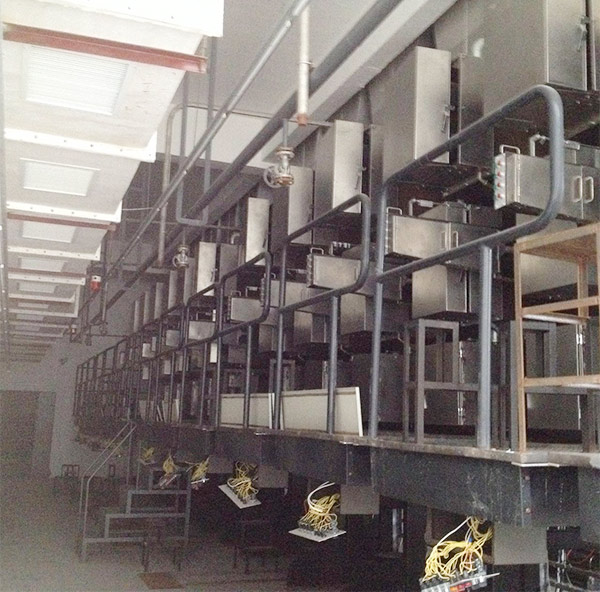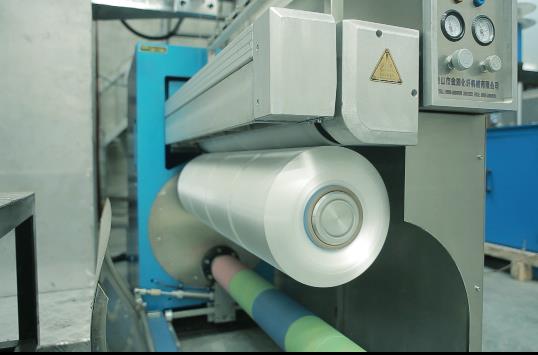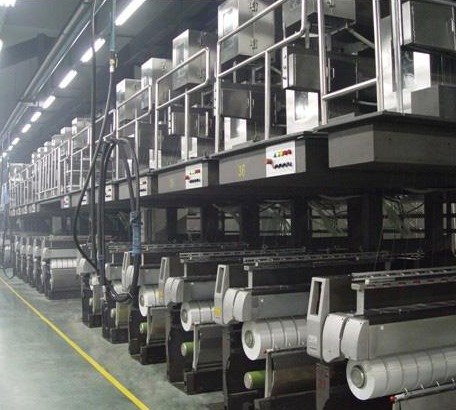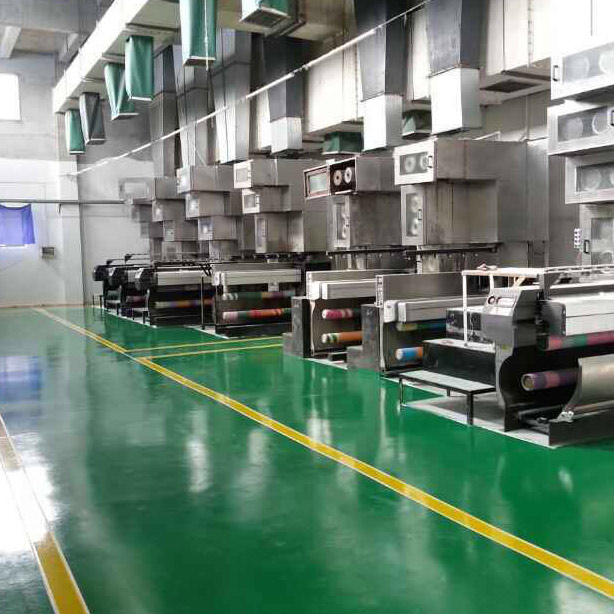- Polypropylene spinning machine
- Polypropylene FDY equipment
- Polyester POY spinning machine
- Polyamide FDY common and high strength equipment
- Polyester FDY equipment
- Polyester high strength equipment
- polyester、Polyamide、 Polypropylene BCF equipment
- Small spinning machine
- All kinds of spinning special parts
- A Guide for Managers to Break Through: Empowerment Rather than Control: Helping Enterprises Bid farewell to Internal Friction and Activate the Intrinsic Motivation of Teams!
- The 2025 Textile and Garment Innovation Annual Conference and the Gongqingcheng Down Industry Development Conference came to a successful conclusion
- The technological upgrade of polypropylene FDY spinning machines empowers the production of diversified chemical fibers
- Textile News: Full-chain Efforts + Cross-border Breakthroughs + Talent Foundation - The Textile Industry is set to Experience a Development Trio!
- The 2025 China Home Textile Fashion Innovation Conference grandly kicked off in Binzhou
- On the Important Role of Polypropylene Spinning Machines in Chemical Fiber Production

- Contact:Mr. Huang Guofu
- Cel:0086-13901505556
- Fax:0086-519-83341119
- Email:czfb5556@126.com
- Add:No. 288-8 ChangLi Rd, Huangli Town, Changzhou, JS PRV.
Polypropylene is the largest individual in all plastic ranges, and is the most widely used category. It can be sorted by different substrates. It can still be different in the classification of the melt flow rate, or even according to individual needs Add additional additives and then identify the use of norms, such as: single polymer, MFR: 12 or so can be used for general injection of finished products, but also the production of multifilament fiber, but also specifically to create a broad molecular weight distribution to improve the fiber weaving after processing Sex; also can add lubricant and anti-adhesion agent to increase the opening to facilitate the finished product requirements of plastic bags. So it extends a lot of specifications, but the general physical properties of almost, in the non-special use of the other is a substitute for each other. Try to use the different materials for classification for reference, and one by one explanation.
1. General level (HOMOPOLYMER) single polymer, the mainland known as homopolymer, the Department of pure propylene polymerization of raw materials.
2. IMPACT COPOLYMER is a single polymer to add ethylene propylene rubber, the impact of high and low mainly depends on the level of rubber content, good or bad degree of cold mainly depends on the level of ethylene content. The raw material manufacturers process different, the highest ethylene content is also different.
3. Transparent grade (RANDOM COPOLYMER) random copolymer, the addition of ethylene ethylene copolymerization, ethylene irregularly dispersed in the polymer, mainly to reduce the crystallinity of the polymer and thus improve the transparency. In the case of
4. High-level (HIGH ISOTACTICITY or HIGH CRYSTALLINITY) to reduce the PP polymer dislocation structure of the content, the relative increase in regular structure content, also improve the crystallinity. Mainly to improve the rigidity of raw materials, thermal denaturation temperature, surface hardness, scratch resistance and gloss. Of course, the addition of nucleating agents will also contribute to the improvement of the above properties
5. Heat sealing (TERPOLYMER) is a random copolymer extension, generally propylene containing ethylene (non-EPR) content of up to 3.5%, but there are processes can be added to 5%, the higher the ethylene content of the product the more soft, , The softening point, the lower the heat sealing temperature, and sometimes in order to increase the ethylene content with butadiene or other third component to become a tri-co-polymer to achieve the above physical properties. In the case of
6. Alloy grade (ALLOY) different high proportion of plastic raw materials can be described as alloy grade, such as PP to add LDPE can improve the softness and impact strength, in the processing can also reduce the necking and increase the smoothness of the molding can also be reduced Falling phenomenon. PP plus EPR plus HDPE can maintain the rigidity, reduce the high EPR content caused by whitening phenomenon, improve the impact strength. In the case of
Composite materials (COMPOUNDING) mixed with different materials, such as the addition of glass fiber, all kinds of inorganic mineral powder, organic wood flour, paper scrap or grain micro-film, in the PP material to improve the various physical properties. Mineral powder also includes: talc, calcium carbonate, barium sulfate, mica, carbon black, carbon fiber and bromide. In the case of
8. Rubber (RUBBER) rubber, TPR (thermoplastic rubber) and TPE (thermoplastic elastomer), sometimes difficult to break, and a variety of definitions have, most of the rubber can be mixed with PP, with the exception of EPR series, it is also difficult to define the mixing is located in the alloy or composite materials. Often often mixed with PP rubber EPR and EPDM, suitable for direct mixing with the production of PP CATALLOY, PLASTOMER, ENGAGE, TAFMER, KRATON and SANTOPLENE and so on. In the case of
9. Special specifications (SPECIALS) not covered in the previous category can be classified into this category, for example: high melt strength raw materials (HMS, High Melt Strength) can be used in the foam to improve the surface air tightness to improve the foaming effect , But also can reduce the phenomenon of sheet metal forming material.
- A Guide for Managers to Break Through: Empowerment Rather than Control: Helping Enterprise
- The 2025 Textile and Garment Innovation Annual Conference and the Gongqingcheng Down Indus
- The technological upgrade of polypropylene FDY spinning machines empowers the production o
- Textile News: Full-chain Efforts + Cross-border Breakthroughs + Talent Foundation - The Te
- The 2025 China Home Textile Fashion Innovation Conference grandly kicked off in Binzhou
- On the Important Role of Polypropylene Spinning Machines in Chemical Fiber Production
- Management Skills: Managing Problems = Managing Efficiency: Anchor the essence of manageme
- Shandong is promoting the transformation and upgrading of its textile industry through int
- Guide to Parameters of Polypropylene Spinning Machine Equipment
- The second Smart Fiber and Flexible Wearable Technology Exchange Conference was held in Na




